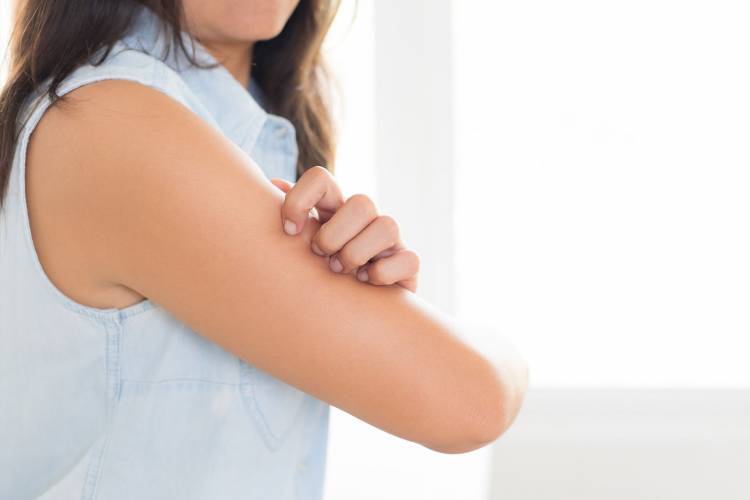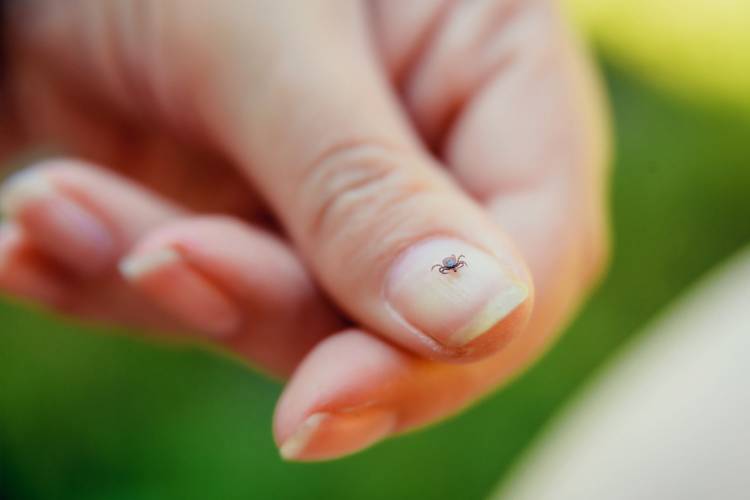What are flea bites on humans like?
If you are interested in finding out what flea bites on humans are like, then we explain the key information to you about flea bites but, also, how to prevent them.
health and beauty
Share

Have you just spent the summer at your holiday home in the country and brought some bites back with you that you don’t know how to identify? If so, you should know that they are most likely to be flea bites. Yes, flea bites. This rather unpleasant insect doesn’t just attack our pets, they are also fascinated with our blood!
What you should know about fleas
Although there are almost 2000 species of flea in the world, the most common is Pulex irritans. It is an insect measuring approximately 2 or 3 mm and without wings, but with the astonishing ability to jump up to 200 times its size, around 30 centimetres.
Fleas feed mainly from blood (they can suck blood up to 20 times the size of their stomach), but can spend weeks without eating until they find the perfect host. Once they find it, normally animals, they feed and leave their eggs (approximately 20 or 30 each day), which turn into legless larvae which inhabit dark and humid places. After a few days, these larvae weave a cocoon in which they can sleep for up to a year. But... How do they wake up? With footsteps and vibrations from the floor.

How to identify flea bites on humans
So... How do you identify a flea bite? Below, we give you a series of identifying features so that you can recognise them at a glance.
- From the bite: the first thing you should know is that fleas don’t sting, they bite and suck. So when they bite, you will be able to see a red dot in the middle, which is where they have made a hole to suck the blood.
- The shape of the bite: where there is one flea bite, there are always more. Fleas bite in rows, or in small ‘heaps’.
- The location of the bite: feet, ankles, elbows, knees, underarms, neck, under the chest, around the stomach or, even, the groin are some of their favourite places.
- By the symptoms: a lot of itching or stinging and a large rash in the inflamed area. In some cases, you can even develop a fever.
What can we do if a flea has bitten us
It is sometimes difficult to prevent these insects from biting us, so...what can you do if a flea has bitten you?
- Once they bite us, fleas defecate on our skin, so it is very important....not to scratch! Or at least, clean and disinfect the area of the bite beforehand.
- Reduce the swelling of the area with ice and an after-bite gel.
- Use an anti-itching cream or specific medication. Always prescribed by a doctor!
How to prevent flea bites
If you have suffered from flea bites before, you know how what it means to suffer and you want to prevent it from happening again. Take note of the advice we offer you below about how to prevent flea bites.
- Cleaning: when you are going to a holiday home which has been empty for a while, look at whether there are small brown dots or pellets on the sheets. If so, they are likely to have been there! Take the precaution of washing the sheets, cushion covers and sofa covers.
- De-fleaing: keep your pets de-flead with an insect repellent for animals, especially if they have been out loose in the countryside.
- Insect repellents: use insect repellents for humans when you go out walking in the countryside or you are going to be in contact with animals that live in it.
- Protection: when you go for a walk in the countryside or through forest areas, wear long socks, the legs are the main point of attack!
Fleas are not the only annoying pest, in our article “War on the ‘vampires’ of the summer”, we tell you everything about the most feared insect of summer, mosquitos.






